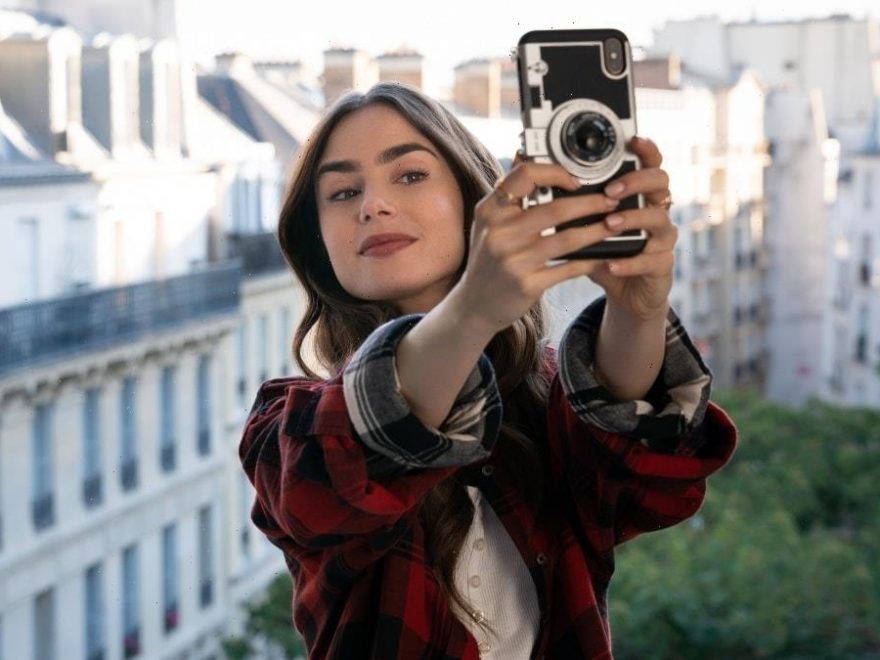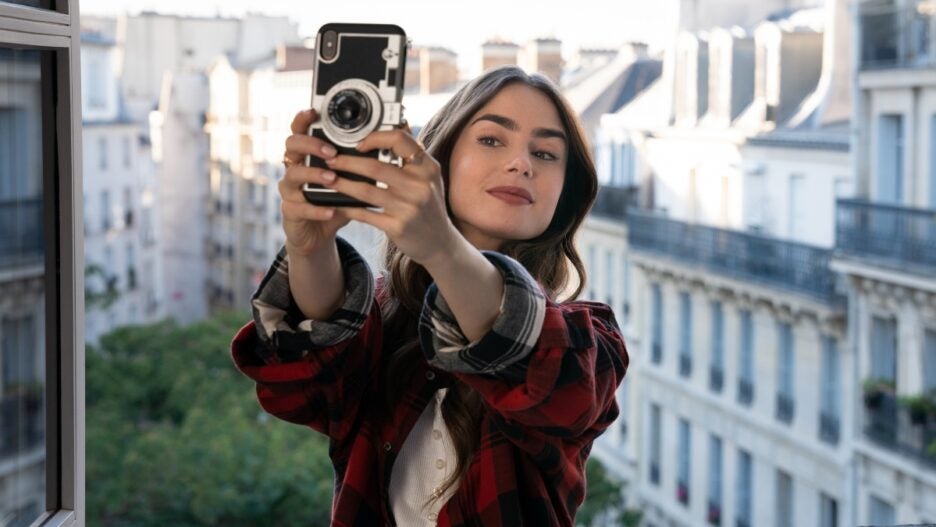Production designer Anne Seibel on working for Darren Star (again) and why conglomerates are interrupting the visual flow of the famed French capital
Photo credit: Netflix
If HBO’s “Sex and the City” promoted an influx of women coming to the Big Apple in search of adventure and romance, Netflix’s “Emily in Paris” is already looking to do the same for (pardon the pun) an American in Paris. And even with narrative similarities, and the shared presence of longtime dream-maker and creator Darren Star, there is even one more connection: production designer Anne Seibel.
“I was approached by the French side of production, I think, because I worked on the two last episodes of “Sex in the City,” says Seibel, referring to the final installments of that hit series where lovestruck Carrie Bradshaw (Sarah Jessica Parker) decided to leave her beloved NYC for a shot at fulltime fairy-tale swoon with her Russian artist beau (Mikhail Baryshnikov) in Paris and ended up with a bad case of ennui. “I don’t know if it’s linked but French producer is the one I did [the 2011 film] ‘Midnight in Paris’ with, and we are like a family.”
If you noticed, there’s a whole lot of the word ‘Paris’ in Seibel’s work, and there is a reason for that, she is a full-time resident and knows the terrain, shown in her Academy Award-nominated work in the already-mentioned “Midnight in Paris” but also on projects with Oscar winners Sofia Coppola (“Marie Antoinette”) and Damien Chazelle (“The Eddy”) that rely heavily on the use of French backdrops. But “Emily in Paris,” she says, leans very much into the title city as an oasis.
“We wanted to Paris to look classical and chic but at the same time unexpected and modern,” says Seibel. “So people would like to come and visit more and more. It’s a fresh and clean Paris but more the fantasy Paris you would really want to escape to with a friend.” But not too tidy-looking, as keen-eyed viewers might notice, as Emily (Lily Collins) contends with screwy electricity, difficulties showering, and noticeable dents and nicks in walls in her flat several walking stories up.
“We wanted a fairly rundown look for her apartment, to contrast her coming from Chicago, where her space is cleaner. It’s a very typical Parisian flat,” says Seibel, who adds that Emily’s very real-seeming venues for her Instagramming are often created with a blend of actual capture and carefully placed digital illusion-making, with one instance even employing a strategically-placed drone to get just the right effect.
Just as integral to the overall look of the series is Emily’s place of employment, the nestled-in-a-courtyard, boutique firm Savoir, where she often butts well-coiffed heads with her deadpan French boss Sylvie (played by Philippine Leroy-Beaulieu). “It’s a typical floor plan, about 350 square meters, with kitchen, living quarters and all, but I broke some walls to create more space,” says Seibel, referring to Savoir’s sleek open-floor environs, including very purposefully-placed glass offices which are all very intentional, creating the feeling of being watched all the time, further amping up Emily’s outsider emotions.
“For Savoir, I adjust the colors based on who is in the room,” adds Seibel. “Sylvie is darker and more severe, where Emily is more pink and pinkish-white to match her personality. For the conference room, we chose more of a blue according to the characters and what they’re doing.”
But don’t fret over those inviting patisseries, outdoor cafes and flower shops Emily frequents, they are often the real thing, sometimes with a minor twist. “The flower shop used is actually a print shop inside, but re-signed and redressed (seen in the embedded stills above). We wanted these locations to seem like Emily lived in a village, someplace Americans would recognize.” The onslaught of corporate expansion (incidentally, a theme in the series) has made a production designer’s job a little harder in recent years, with too-recognizable companies burrowing into quaint towns in Europe. “I think it’s becoming International, with McDonalds and Starbucks and the like, the small traditional shops are disappearing and it’s sad, but between ‘Midnight in Paris’ and now I could definitely see the difference,” says Seibel, who emphasizes that the city’s beauty is still very much in evidence. “The preserved architecture we have is beautiful. Every time I go away and come back, I say ‘My God, it’s beautiful!’ So I really like to show it.”
Check out Seibel’s portfolio from the first season of “Emily in Paris” by clicking this link.
Source: Read Full Article




